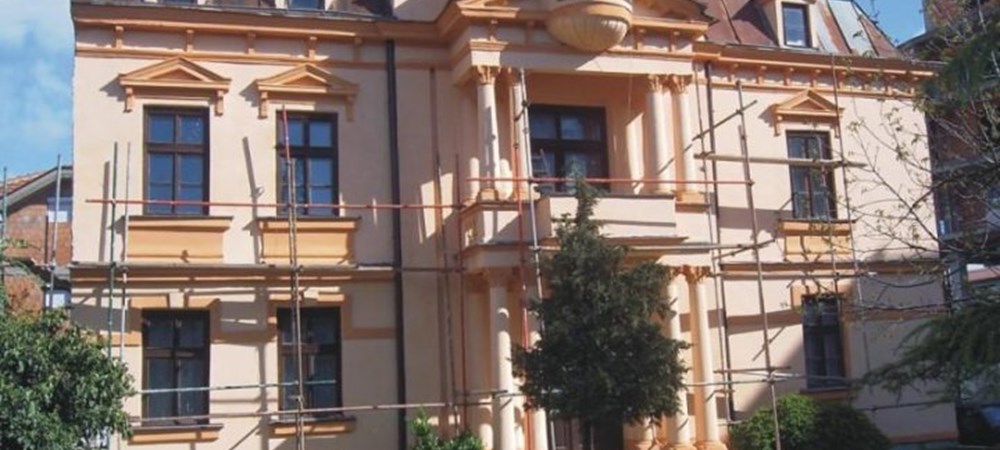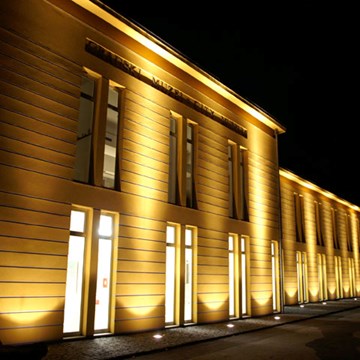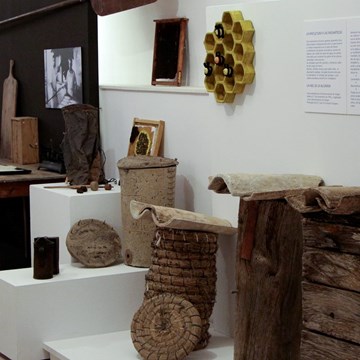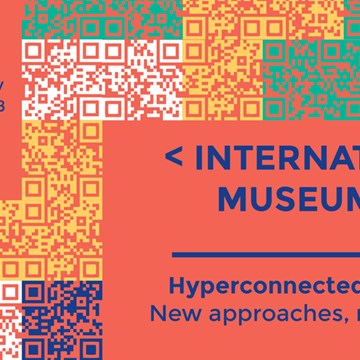„Dr. Nikola Nezlobinski" Museum - Struga
НУ Музеј “д-р Никола Незлобински” - Струга
„Dr. Nikola Nezlobinski" Museum - Struga is a complex institution including the Departments of: Biology, Archaeology, Ethnology, History, Art History, as well as the Department of Education and Marketing.
The founder of the museum was Nikola Nezlobinski, a Russian who came in Struga in 1924 as a doctor to help the fight against malaria. He was also a nature lover and when he came in Struga, he began to hunt, but also to collect and stuff insects, birds and many other animals. In 1928 he presented the first zoological collection that set the foundations of the Natural History Museum of Struga. In his honor, the museum carries his name. Doctor Nezlobinski enjoyed a great respect from the citizens, and because of his social accomplishments, he was proclaimed as honorary citizen of the Town of Struga. His remains rest in the Alley of Worthy Citizens at the Struga Cemetery together with the remains of his wife Sofia.
The museum is a unique presenter of the natural and cultural heritage of the Lake Ohrid region – UNESCO World Heritage List.
The permanent natural history museum collection which is displayed at the museum plays an important role in preserving of all the samples that originated from Struga, the Struga Region, the Ohrid Lake, the swamp, the lowland, thus making the museum itself a specialized institution for taking care of the heritage of the region. The exhibition abounds with rich museum material, which has priceless value to the science. Different kinds of insects, amphibians, reptiles and fishes that live in the Ohrid Lake are presented, including a large variety of birds and mammals typical for our region - representatives of all animal groups, as well as part of the botanical material. The exhibition presents exhibits from the evolution of all animal categories - from the most primitive forms to mammals. The preparation department, which takes care of the maintenance of the display, also acts within the Biology Department.
The Archaeology Department is engaged in collecting, recording, protecting and professional treatment of museum materials and museum objects that preserve evidence regarding a long period of time - from prehistory to the Middle Ages. It also organizes permanent and temporary thematic exhibitions and presents the accomplishments in professional publications.The interest for the archaeological cultural heritage on this soil began in the late 1950’s and early 1960’s, with reconnaissance of the land and the first archaeological excavations. In addition, about a hundred archaeological sites have been recorded, among which the most important ones are the pile-dwellings Usta na Drim and Vrbnik in the Lake Ohrid, Crkveni Livadi in v. Vranishta, the sites of Sveti Ilija in v. Delogozhda, Plachikrusha in v. Dobovjani, Grobishta in v. Koroshishta, and the three Early Christian basilicas in the countryside of Radolishta, Oktisi and Tashmarunishta. These basilicas have unique floor mosaics from the period of the 5th – 6th centuries AD. A part of the mosaic of the basilica in the village of Oktisi has been exposed in the House of the Miladinov Brothers within the permanent display. The Archaeological collection of the museum is rich and diverse, including bone objects (harpoons, chisels), stone objects (axes), ceramics objects (kantharoi, plates, pans, hydria), metal tools and weapons, jewellery and glass.
The Ethnology Department is concerned with the cultural history and folk traditions at the territory of Struga and the Struga Region. This region is known for the abundance of such a heritage, which comes from the diversity of the areas included in the Struga Region, each with its own specifics. According to them the Struga Region can be divided in several areas: Struga, the Lowland Villages, Gorni Drimkol, Dolni Drimkol and Malesija.After extensive field work the ethnological museum collection was created. It includes traditional old-town clotes and folk costumes, jewellery, traditional textile, household utilities made of metal, wood and clay, objects of traditional economy, tools and other objects for diverse use, as well as numerous photographs, audio and video material. This collection is regularly promoted and presented to the general public through the temporary or permanent thematic displays and exhibitions. The Ethnology Department organizes the annual event "Review of Folk Costumes" which is a traditional festival of folk costumes and folklore.
The Art History Department deals with research, recording and preparation of the documentation of paintings, carving, bibliographic material and another church material, but it also collects and takes care of works of contemporary art, organizes thematic exhibitions and publishes the researched material.The Struga Region is rich in churches and monasteries dating from the Byzantine Period, Post-Byzantine Period and from the Renaissance, some of them having been registered as protected cultural monuments. Four cave churches are standing out by their uniqueness and high artistic values, as well as the Oriental Basilica of the Holy Virgin Immaculate in v. Vranishta and, in the town, the Church of St. George. The Icon Gallery within the church presents collection of icons in possession of the church. Among them, the most important is the icon of St.. George from 1267, which is among the most beautiful works of medieval iconography in Macedonia.The Memorial Gallery Vangel Kodzoman also acts within the department. It is dedicated to and named after one of the founders of the modern Macedonian art. Besides the thematic exhibition of Kodzoman "Struga in the past," exhibitions of young academic artists and other renowned authors are organized. The Gallery also stages loan exhibitions from other cultural institutions. Besides Kodzoman works, the museum has works of several Macedonian and world authors in its collection.
Exhibitions and events
We don't have anything to show you here.
Educational programs
We don't have anything to show you here.
Collections
We don't have anything to show you here.












